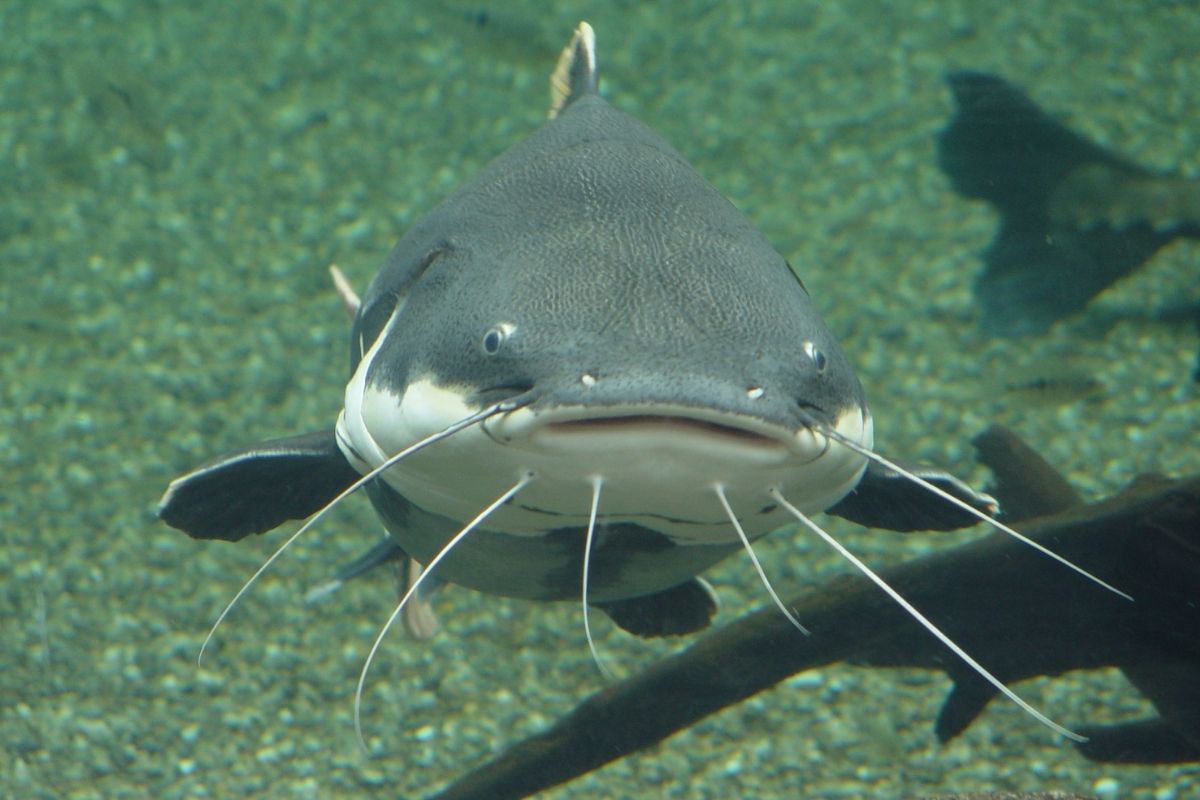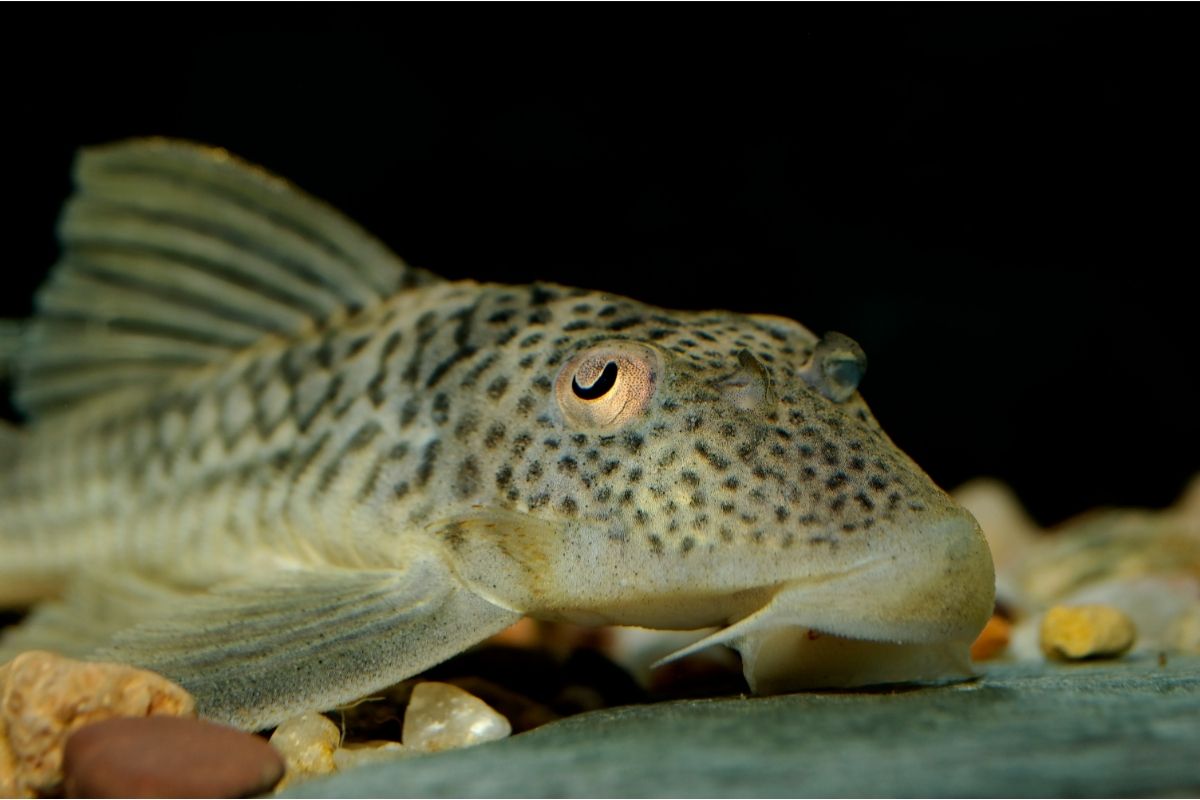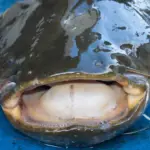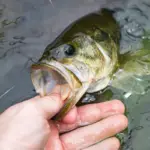There are a lot of myths surrounding catfish. Some people believe that they are not safe to eat, while others think that they do not have bones.
We take a look at the mystery of catfish bones, and we also find out how to handle these fish safely.

Types Of Catfish
A catfish is an aquatic animal with a long slender body and fins. They can be found in rivers, lakes, and even ponds.
They are also known as mudsuckers because they feed on decaying plant matter from the bottom of the water.
Catfish have been around for millions of years and have evolved into many different types. Their most common types in the US are the channel catfish and blue catfish.
Blue Catfish (Ictalurus Furcatus)
Blue catfish are native to the United States and Canada. They are the largest of the American catfish species and can grow up to 46 inches.
Blue catfish can live for as long as 20 years, and they can weigh as much as 68kg. Blue catfish are usually found in warm waters and prefer to stay near the surface.
In the US, blue catfish are considered an invasive species because they were introduced by humans. This means that they have caused problems for other animals and plants.
Common Channel Catfish (Ictalurus Punctatus)
The common channel catfish is another popular catfish species. It is native to North America and South America.
It can reach weights of up to 23kg. Common channel catfish are often found in areas where there is plenty of vegetation and food.
They are very adaptable and can survive in both fresh and saltwater.
Channel catfish, also known by anglers as Channel Cats, is one of the most fished fish species in the United States.
Suckermouth Catfish (Hypostomus Plecostomus)
This catfish is native to the Amazon River Basin in Brazil, Colombia, Ecuador, Peru, Bolivia, and Paraguay.
Its scientific name comes from its mouth being shaped like a sucker. Suckermouth catfish can grow up to 20 inches.
This relatively small size makes them very popular with aquarium owners who use these fish to keep the bottom and glass of their aquarium tanks clean.
Black Bullhead Catfish (Ameiurus Melas)
Bullhead catfish are native to tropical regions of the center of the US. These fish are commonly called bullheads because of their large heads.
Bullhead catfish prefer brackish water which is very warm or low in oxygen. Their diet consists mainly of crustaceans such as crabs, shrimp, and crayfish.
This catfish species weighs less than a kilo, and due to its smaller size, it is also used as bait for fishing.
Black catfish have small spines that release a mild poison when they feel threatened.
Does A Catfish Have Bones?
Yes, catfish do have bones. Similar to other fish, a catfish does have a larger bone which resembles a spine, and smaller bones out to the side. These smaller bones resemble a rib cage.
Although there are several different catfish species, each with its anatomy, each species has a very similar bone structure.
Above the base of the pectoral fin, you will notice that the catfish’s humeral process extends away from the pectoral girdle.
The fish’s cranial roof is very wide, and its skull is slightly pressed inwards. The skull itself contains several smaller bones that are loosely connected.
The best way to see the skeleton of a catfish is not just when it is dead, but you can also take a look at a ghost catfish, which has a translucent body. This means that you will be able to see almost each of the fish’s bones.
However, ghost catfish (kryptopterus vitreolus) is a very small catfish species, so their skeleton may vary slightly from that of larger catfish.
Are Catfish Poisonous?
Yes, some catfish species produce a mild poison which is released through small spikes along the top of their spine.
You should be careful when touching a catfish as their venom can cause swelling and increased bleeding.

How To Handle A Catfish Safely
As catfish have small venomous spikes around their pectoral fins and dorsal fins, it’s important that you hold a caught catfish the correct way.
Small To Medium Catfish
Catfish that weigh up to around eight pounds can be handled by placing your hand behind the pectoral and dorsal fins.
Holding a catfish by the body will allow you to avoid the poisonous spikes, and you also have a much firmer grip on the body of the animal when it tries to wriggle itself free.
Big Catfish
Larger catfish with a weight above eight pounds are usually much too difficult to hold with one or two hands.
They are also quite strong which means that it becomes more dangerous if you accidentally drop the fish while trying to catch it.
You should handle a big catfish with a lip grip or a dip net.
Why You Shouldn’t Hold A Catfish By The Mouth?
It may be tempting to hold a catfish by its mouth but the inside of a large catfish’s mouth has very coarse skin, which means that you could easily scrape your skin when you try to remove your hand.
The easiest and most effective way to avoid this issue is to use either a dip net or specifically designed fish grips.
Are Catfish Safe To Eat?
Catfish are perfectly safe for eating. However, you will need to remove all the poison glands and bones before you cook it.
It’s also important that you cook the fish properly to ensure that no toxins remain inside the meat. You should always check your local laws regarding the consumption of wild-caught fish.
If you are unsure about whether or not you can consume a particular type of fish, then you can contact your local fishing authorities first.
How To Remove Catfish Bones
Many anglers enjoy catfish filets as a delicious meal, but before you can eat your catch, you will need to prepare it and remove the bones.
Let’s take a look at the things you need to do before cooking catfish.
Clean Your Catfish
Before you start cutting your catfish, it’s best to clean the catfish with some clean water first. This will wash off the dirt during transport, and also the brackish water.
Removing The Fins And Cutting Off The Head
The best way to start cutting your catfish is by slicing through the skin behind the head and then moving the knife slowly around the neck.
At this point, you should leave the head-on, and start removing fins first. Once you remove the fins, you can slowly remove the skin from the fish.
Make sure that you use a very sharp knife for this step, as removing the catfish skin does take time and it can be bloody.
However, once you have removed all the scales and skin, you can now cut off the fish’s head.
Remove The Organs
Once you have removed the head, you can start working on removing the organs.
This is where you will need to work carefully because ideally, you want to remove the organs as a whole so it doesn’t get too messy.
Cutting The Catfish Filets
For this step, you need to start from the dorsal fin and work your way around the tail and bottom of the fish.
It’s important that you cut as close to the bone as possible. After all, you don’t want to waste any good filet.
When you get to the ribs, you need to be careful as there are several small bones that you need to cut around.
Conclusion
Catfish have bones just like many other fish species. Bones hold their skeleton and organs in place. Unfortunately, bones also make catfish more difficult to prepare for cooking.
- Do You Need An Indicator For Nymph Fishing? - November 16, 2023
- Fishing Safety Tips For Families - September 25, 2023
- What Is The Best Time To Night Fish At A Lake? - September 18, 2023










